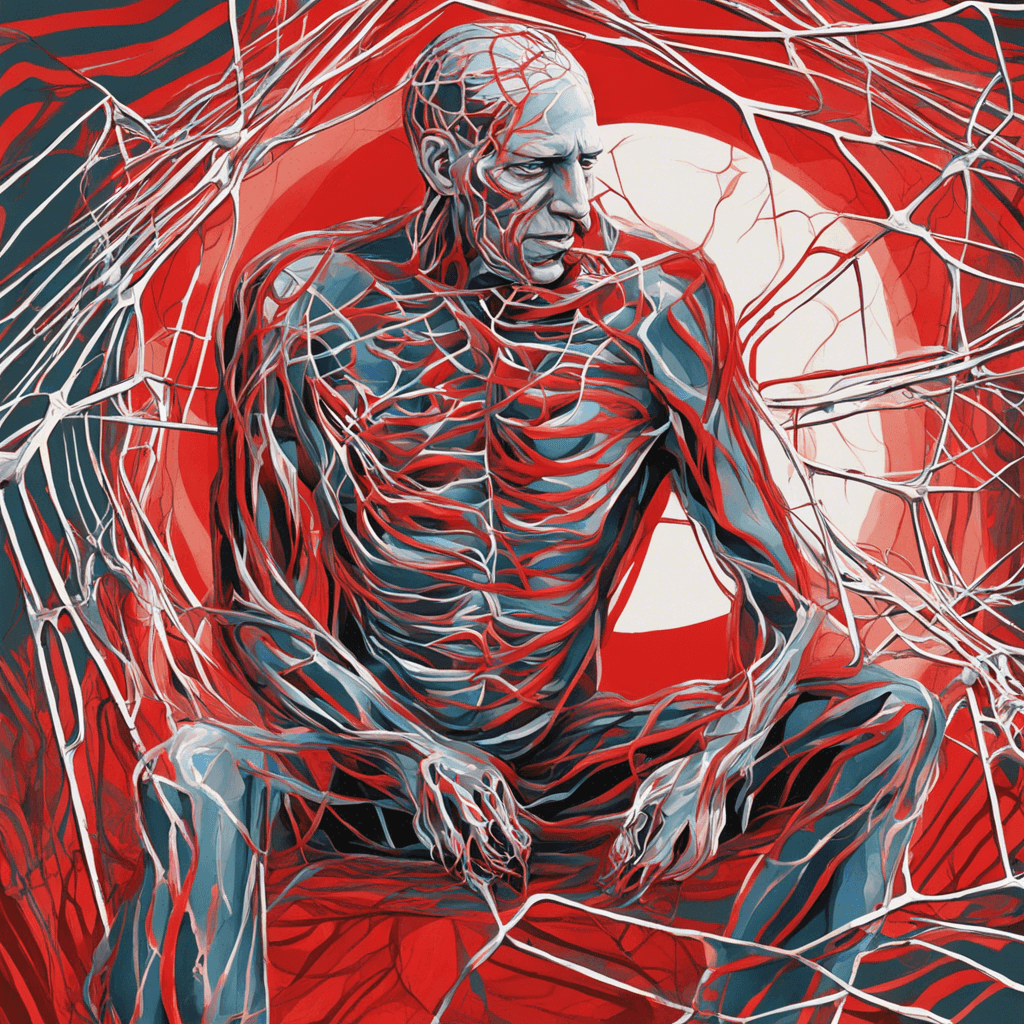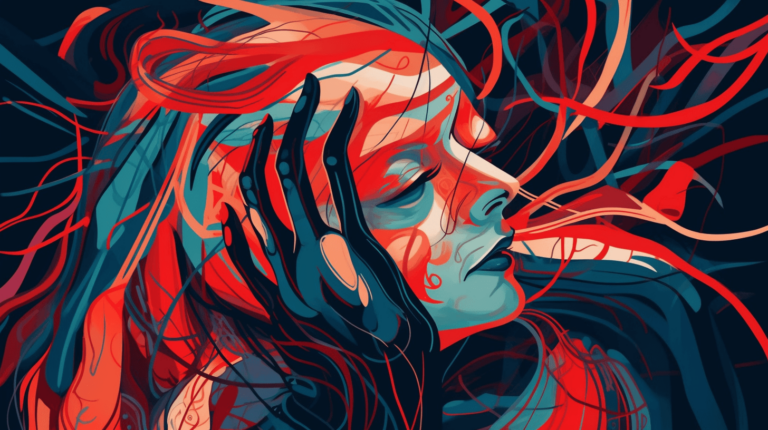Understanding the Beating Heart of Chronic Pain
Detailed look at the definition, causes, and effects of chronic pain
“Chronic pain,” a phrase we’ve all heard, but do we truly understand what it signifies? In the simplest of terms, chronic pain is any pain that persists for weeks, months, or even years. It’s that nagging discomfort that refuses to bid you goodbye, turning life into a tiresome labyrinth of tension and torment.
Now, let me walk you through the usual suspects behind chronic pain. The culprits often range from the evident like injuries or surgeries, to the invisible, such as nerve damage and illnesses like fibromyalgia or arthritis. Sometimes, however, the cause might be as elusive as a cat in the night, making it tricky to pin down.
Chronic pain operates like that unwelcome house guest; it overstays its welcome and seriously dampens your life’s party. From the inability to engage in activities you once loved, struggling with mental health issues, to the constant battle with sleep, chronic pain can diminish your quality of life like a hurricane wiping out a blooming garden.

The prevalent solutions to chronic pain
When pain dons the chronic cape, managing it often involves the proverbial ‘kitchen sink’ approach. This typically starts with medication. Over-the-counter pain relievers, opioids, and antidepressants can all play a role in subduing the demons of constant discomfort.
Then comes physical therapy- the art and science of treating pain through movement. It’s like a symphony for your muscles and joints, frequently providing relief and improving mobility.
Organic is all the rage these days, and it’s not surprising that many folks reach out to alternative and holistic treatments for pain management. From acupuncture and yoga, to massages and herbal remedies, the options are as wide as the ocean.
The limitation of current pain management solutions
Despite these possible lines of attack, chronic pain often seems undefeatable. For instance, although medication can effectively manage pain, it’s often a double-edged sword with potential side effects and addiction risks.
Switch over to physical therapy, and the hurdles of costs and accessibility seep in. Not everyone has the luxury of time and resources for regular therapy sessions.
Moreover, while alternative treatments provide a glimmer of hope, the uncertainty around their effectiveness and scientific proofs frequently raise eyebrows and induce skepticism.
Ashiatsu Massage: An Introduction to Ancient Healing
The origin and philosophy behind Ashiatsu massage
I welcome you now to the world of Ashiatsu—a massage therapy that steps over the common hands-on approach (pun thoroughly intended). Its roots trace back to Asia, heavily influenced by Shiatsu from Japan and the age-old healing principles of Traditional Chinese Medicine.
The philosophy that bounces Ashiatsu is fairly straightforward: your body holds the wisdom to heal itself, and the therapist’s role is to be the facilitator.
Demystifying the method of Ashiatsu massage
You might be raising an eyebrow at the concept of a massage therapist using their feet to work on your bingo wings and love handles, but hear me out. Ashiatsu therapists use their feet to deliver deep, sweeping, broad pressure across different muscle groups.
Oh, and gravity? That’s the therapist’s wingman in this process, providing the extra weight needed for the deep pressure, like the special sauce in your favorite burger.
The reception and popularity of Ashiatsu over the years
Ashiatsu might seem like the new kid on the block, but this technique is gradually making waves in the wellness ocean. From a handful of practitioners in the past few decades, Ashiatsu’s popularity has steadily grown, both in and outside the massage community.
Yet, its acceptance in mainstream medicine has been more lukewarm, with the scientific community taking a ‘show me the proof’ approach. Nevertheless, Ashiatsu continues to enthrall people who swear by its healing effects.
The Healing Hands of Ashiatsu: Exploring The Potential Benefits
How Ashiatsu massage addresses chronic pain
The principal USP of Ashiatsu massage lies in how it can alleviate chronic pain. By applying pressure to specific points in the body, Ashiatsu can work closely with your nervous system to turn down the volume knob on your pain signals, sort of like a physical mute button.
The additional health benefits of Ashiatsu massage
But wait, this isn’t just a one-trick pony! Ashiatsu can be your ally in combating stress and improving physical fitness. If you feel like a rusty robot, stiff and creaky, an Ashiatsu session might just oil those joints and muscles, boosting that flexibility and ease of movement.
Comparing Ashiatsu to other massage therapies
In the melee of massage therapies, Ashiatsu introduces the element of gravity and positions itself uniquely. It tends to cover a larger area with each stroke, delivers a deeper degree of pressure, and creates an immersive healing experience setting it apart from the massage crowd.
The Practicality of Asheatsu Massage in Everyday Life
The process of receiving Ashiatsu massage
Taking the plunge into Ashiatsu? Here’s what you need to expect: unique massage bars that the therapist holds on to for balance, soothing pressure from the therapist’s feet, and the odd sensation of relaxation and wellbeing pervading your senses.
Prepping for Ashiatsu doesn’t require a NASA style checklist. Just ensure your body is clean and hydrated, clothe yourself according to your comfort, and have an open mind.
Finding competent and certified Ashiatsu therapists
First things first, you need a certified Ashiatsu therapist— someone with the magical feet that can knead away your pain. Look for therapists with a recognized certification, read up patient reviews, and trust your gut when you have your first interaction.
The affordability and availability of Ashiatsu treatment
The costs for Ashiatsu can vary from place to place, but it often falls into the same range as other specialty massage therapies. Its availability, too, is growing with increasing awareness and acceptance.
The Future of Ashiatsu and Chronic Pain Management
Ongoing research and findings on Ashiatsu’s effectiveness
Ashiatsu may not have a mountain of research backing it yet, but the hillock is growing. Recent studies highlight its potential benefits for people with chronic lower back pain and tension headaches, but we still have a long way to go.
The place of Ashiatsu in future pain management strategies
With the world turning towards more natural, noninvasive remedies, Ashiatsu is primed for a larger role in holistic health care. It offers a unique possibility for an integrated approach to managing chronic pain, setting the stage for exciting times ahead.
Personal stories: Testimonials from chronic pain sufferers
The proof of the pudding, as they say, is in the eating. And from the myriad personal accounts of folks who’ve found a new lease of life through Ashiatsu, it seems like this pudding is pretty delicious! Their stories speak volumes about the potential of this ancient therapy to shape the future of chronic pain management.
Conclusion: Ashiatsu and the Path to Pain-Free Living
The path to defeating chronic pain often feels like walking a tightrope. But Ashiatsu presents a promising bridge to traverse this troubled water. Its unique approach, potential health benefits, and growing acceptance lock arrows at chronic pain, already hitting bullseyes for many.
Groundbreaking therapies like Ashiatsu are just the beginning. The future of chronic pain management could see an exciting admixture of traditional wisdom and modern breakthroughs, and who knows, perhaps, we’ll finally bid adieu to chronic pain!
Frequently Asked Questions
Now, armed with this information, you might just be ready to conquer your chronic pain, one Ashiatsu session at a time. The footing here is firm, and the path ahead promising—so why not take that step?

